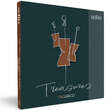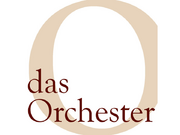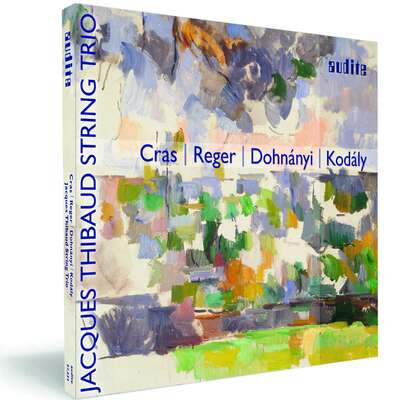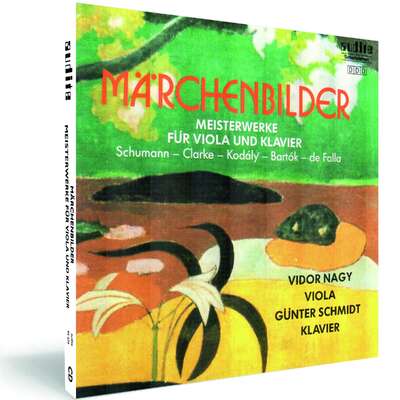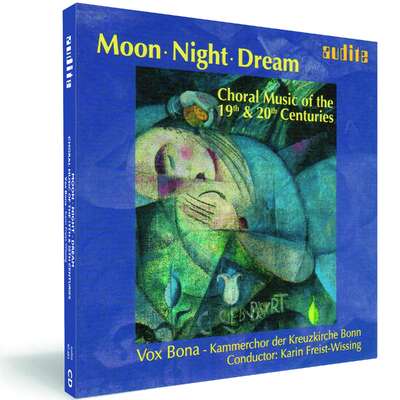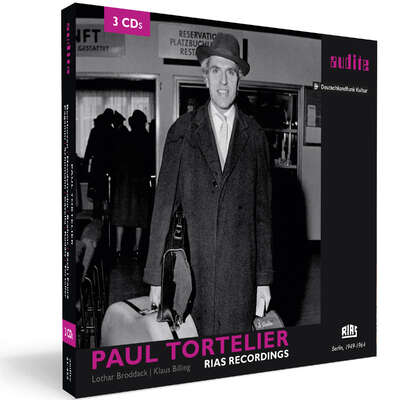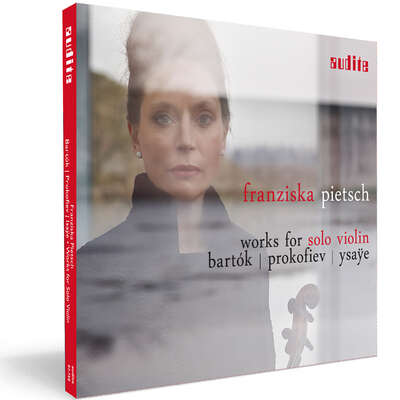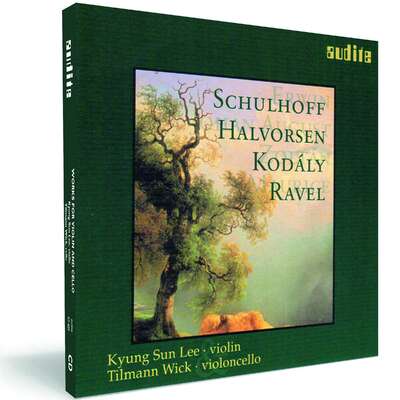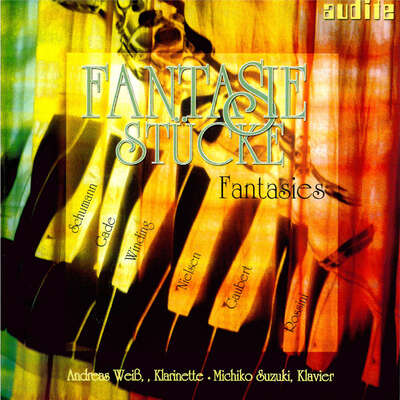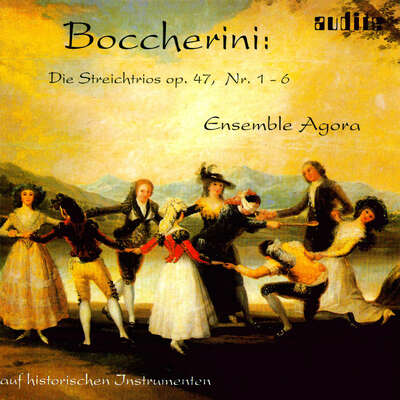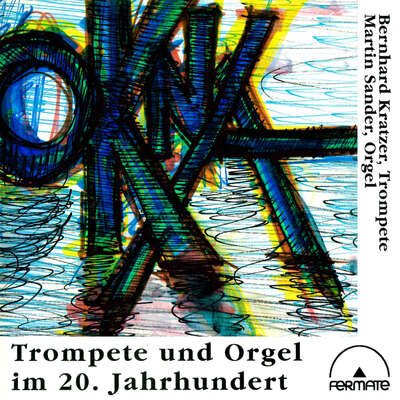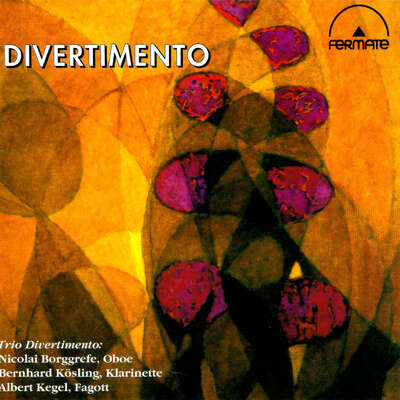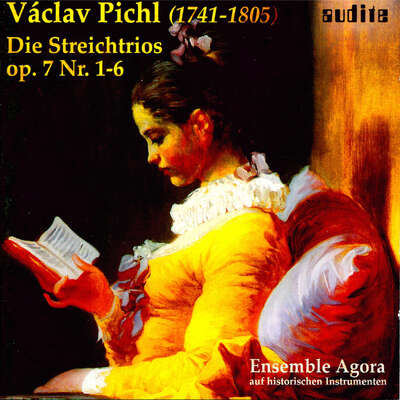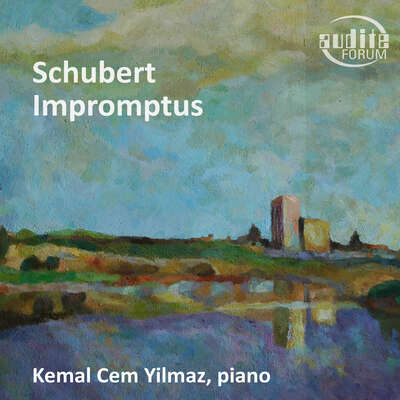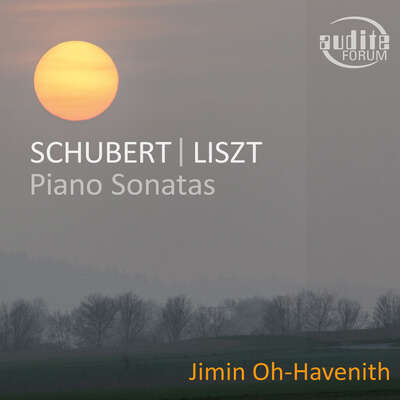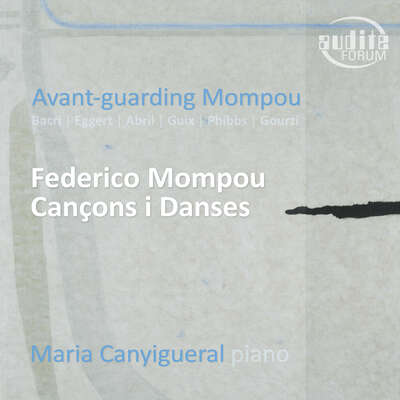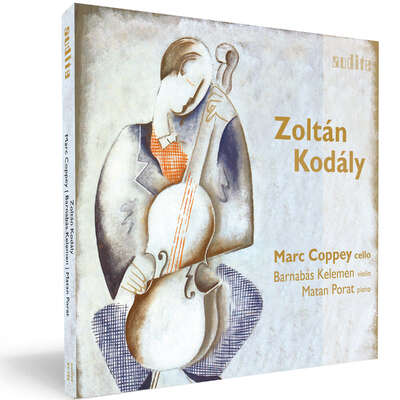
Rarely heard works for string trio from the early twentieth and twenty-first centuries, assembled by the Trio Lirico for their latest recording. Different musical styles and cultures are on offer: as well as late romantic to modernist music by Eugène Ysaÿe, Ernst von Dohnányi and Zoltán Kodály, this album also presents a string trio by Péter Eötvös composed in 2020 – an impressive commemorative work.more
"the Trio Lirico plays [...] with an energy, an intensity, and a joy that is simply mesmerizing. [...] The interpretations are authentic and lively, the convincing result of a well-functioning communication." (Pizzicato)
Details
| Treasures | |
| article number: | 97.815 |
|---|---|
| EAN barcode: | 4022143978158 |
| price group: | BCA |
| release date: | 2. February 2024 |
| total time: | 50 min. |
Bonus Material
Informationen
The repertoire for string trio is comparatively narrow; however, in addition to the renowned works of Mozart, Beethoven or Reger, it also holds surprises, new discoveries and new compositions. When selecting the music for this recording, the Trio Lirico ventured off the beaten track, opening up a broad stylistic and expressive spectrum with early twentieth century works from Belgium and Hungary by Eugène Ysaÿe, Ernst von Dohnányi and Zoltán Kodály, showcasing impressionistic elements as well as folkloristic moments. A string trio by Péter Eötvös completes the programme: a haunting commemorative composition featuring a multitude of different playing techniques, modes of expression and soundscapes. The composer himself regards Trio Lirico's interpretation as authentic and exemplary.
Reviews
Diapason | N° 735 - Été 2024 | Jean-Claude Hulot | July 1, 2024
Le Trio Lirico s'était déjà distingué dans un album Reger pour le même éditeur (cf. n° 665), Hila Karni ayant entretemps remplacé JohannesMehr lesen
Classica – le meilleur de la musique classique & de la hi-fi | N° 264 - Juillet / Août 2024 | Jérémie Bigorie | July 1, 2024
Bouleversante est leur interprétation du bref trio de Péter Eötvös [...] L'usage de modes de jeu très différenciés et d'harmonies microtonales va de pair avec des séquences compartimentées, que Franziska Pietsch (violon), Sophia Reuter (alto) et Hila Karni (violoncelle) individualisent autant qu'il est possible. Une lecture intensément expressive reconduite dans la Sérénade op. 10 d'Ernst von Dohnányi.Mehr lesen
Das Orchester | 6/2024 | Daniel Knödler | June 1, 2024 | source: https://dasorche...
Franziska Pietsch (Violine), Sophia Reuter (Viola) und Hila Karni (Violoncello) gelingt ihr Zusammenspiel so perfekt, dass man auf die Idee kommen könnte, die „Erfindung“ des Streichquartetts oder gar größerer Streicherbesetzungen wären schlicht überflüssig gewesen. Was die drei Streicherinnen hier auf die Bühne stellen, hat einfach alles: orchestrale Größe, klangliche Balance, lupenreine Linienführung, eine virtuose Dynamik und einen Drive, der im zentralen Vivace wirklich Staunen macht.Mehr lesen
Gramophone | May 2024 | Peter J. Rabinowitz | May 1, 2024 | source: https://www.gram...
Performances of works by Dohnányi, Ysaÿe and Kodály plus the first recording of Péter Eötvös's 2020 Trio, a fine tribute to the composer whoMehr lesen
Two difficult rarities anchor this release. Most challenging is the first recording of Peter Eötvös’s 2020 Trio, written as a memorial for viola player Christophe Desjardins. It’s a compact work with an intricate palindromic and canonic structure (unfortunately, barely alluded to in the notes). The part for each instrument is grounded in a different 10-pitch row; the rows enter in staggered fashion and move slowly through the piece, once forwards, once backwards. The pitches are not heard singly, as in a Second Viennese work; rather, each dominates a fragment, from one to 11 bars in length, where it is manipulated – always with a blinding array of colours – until the next fragment takes over.
Unfortunately, this process, not to mention the other knotty structures layered upon it, is imperceptible without access to the score. And even then, the music’s organisation is visual rather than audible. Still, if you consider the framework to be a purely compositional expedient (guard rails for the composer) rather than an expressive device, then the Trio works powerfully, for even if you don’t understand how it’s put together, the pain of loss is palpable.
Ysaÿe’s Trio, written in 1927 and not quite so rare, is complex, too, but in a less abstract way. A restless, richly contrapuntal dreamscape, it may remind you in spots of Schoenberg’s Verklärte Nacht, although its harmonies are more apt to destabilise any sense of a tonal centre. True, it’s short on melodic appeal; but if you’re responsive to post-romanticism, you’ll find that, as it swings precipitously from introverted brooding to extroverted audacity, it fully grips your attention. The other two works, less taxing and more familiar, add a welcome respite to the programme.
The disc brings together works of such varying demands that it serves as a stunning calling card by advertising the range of the group’s sympathies. From the wrenching dissonances of the Eötvös to the cheeky off-kilter rhythms of Dohnányi’s opening March, from the saturation of the Ysaÿe to the transparency and uncharacteristic geniality of Kodály, this group – with their gorgeous tone, finely judged balances and quick reaction time – capture every shift in mood and colour with confidence and commitment. Fine engineering, too. The album’s title, ‘Treasures’, is unusually apt.
Radio Bremen | 11.02.2024 "Klassikwelt", 19:00 Uhr | Wilfried Schäper | February 11, 2024 | source: https://www.brem... BROADCAST
Das Streichtrio ist in der Kammermusik eine sehr spezielle Besetzung. Im Unterschied zum Streichquartett „fehlt“ da eine Stimme, und das macht dieMehr lesen
Das „Trio Lirico“ spielt diese echte Rarität für Streichtrio jetzt auf seinem neuen Album mit Trios des 20. Jahrhunderts. Hier kommen Franziska Pietsch, Violine, Sophia Reuter, Viola und Hila Karni, Cello mit dem Streichtrio „Le Chimay“ des Belgiers Eugéne Ysaye…
Musik: Ysaye – 18´14 (audite 97.815, Track 1)
Kaum zu glauben, dass hier wirklich nur drei Streicher gespielt haben. Das war das Streichtrio „Le Chimay“ des belgischen Geigers und Komponisten Eugène Ysaye von 1927 – eine charaktervolle Musik an der Schwelle zur Moderne. Das fabelhafte „Trio Lirico“ spielt das extrem selten zu hörende Stück auf seinem neuen Album „Treasures“. Und hier sind wirklich echte „Schätze“ der Kammermusik zu heben – eine tolle Platte weit abseits vom Mainstream!
www.pizzicato.lu | 04/02/2024 | Alain Steffen | February 4, 2024 | source: https://www.pizz... Energetische Damen
Es sind versunkene Schätze für Streichtrio, die hier gehoben werden. Und das Trio Lirico spielt die Trios von Ysaÿe und Eotvös, das Intermezzo vonMehr lesen
Das Trio Lirico hat keine Probleme, die musikalische Sprache in Klang umzusetzen und dabei ebenso virtuos wie feinfühlig vorzugehen. Die Interpretationen wirken authentisch und gelebt und sind das überzeugende Resultat einer gut funktionierenden Kommunikation. Alle Werke sind hörens- und entdeckungswert. In dem Sinne ist dies ein Album mit hohem Repertoirewert.
English Translation:
These are sunken treasures for string trio, and they are played here. And the Trio Lirico plays these Trios by Ysaÿe and Eotvös, the Intermezzo by Kodaly, and the five-movement Serenade by Dohnanyi with an energy, an intensity, and a joy that is simply mesmerizing.
Franziska Pietsch, violin, Sophia Reuter, viola, and Hila Karni, cello, are this « wild » trio that moves with joy but also with seriousness through these wonderful trios of the 20th and 21st centuries, showing with every note that modern music can be very musical and extremely entertaining at the same time. Or very serious and heartfelt, as in the trio ‘in memoriam Christophe Desjardins’ by Peter Eötvös.
The Trio Lirico has no problem translating the musical language into sound and is as virtuosic as it is sensitive in its approach. The interpretations are authentic and lively, the convincing result of a well-functioning communication. All the works are worth listening to and discovering. In this sense, this is an album with high repertoire value.
